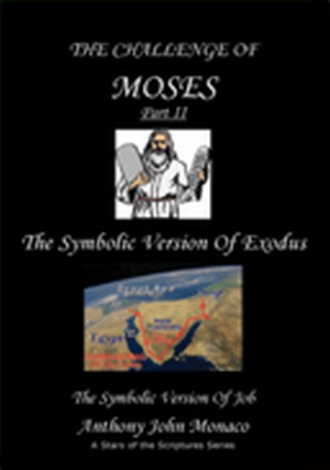Moses, who had been educated in the ways of the Pharaoh and
the Egyptians, was not aware of his heritage as a descendant of the Children of
Israel until he was a grown man approximately 3500 years ago. Moses was a living example of a person who
knew nothing of his spiritual heritage of the One God and he possessed a
consciousness of a people who, like Pharaoh, symbol of fallen human nature,
knew not the LORD. But Moses did come
to know the LORD on Mount Sinai where he personally experienced the covenant with the LORD
as he described in his written testimony, The Second Book of Moses called Exodus. Moses came
to know that he was a spiritual person, a Being, an individual aspect of the
LORD, alive and
functional within a human form.
There is no question that Moses did learn of his heritage
which he wrote in allegorical forms contained in The First Book of Moses called Genesis. This explains how Moses, who
was not born until the Book of Exodus, could write about people who preceded
him in history. Adam and Eve are
characters in an allegory written by Moses:
Adam, the first man, represents spiritual man on earth who is
made in the image and likeness of God. Eve, his wife, represents the human form in which spirit
dwells on earth. Cain and Abel
are behaviors, bad and good, emanating from their “parents”, the symbols of
spirit and form.
Allegory changes to history in a transition from Adam to
Noah and his three sons: Shem, Ham and
Japheth. The descendants of Shem lead to
Abram, who becomes Abraham, the same person who fathered Isaac and
Ishmael. Isaac fathered Jacob,
who became Israel, the father of twelve sons who
became the spiritually incompetent leaders of the twelve tribes of Israel.
Ishmael, son of Abraham, is the ancestor of Mohammed, the founder
of the Muslim faith. Thus, Jews and
Muslims are classified as Abrahamic faiths.
The author agrees with Biblical historians that Moses, in
addition to writing the first 5 books of the Holy Bible
called the Torah, also authored the Book
of Job in approximately 1520 BC. He presents the Book of Job as an
allegory. Job represents the spirit of
man, perfect and upright, who loved God and eschewed evil. Job, came upon terrible conditions and circumstances
of the fallen state of his environment, and yet he would not curse God under
any circumstance. The distortions of
the fallen state are advocated by Satan who attempts to break the spiritual
connection between God and Job.
Moses understands that Man is made in the image and
likeness of God. Moses, the Deliverer,
sees clearly the depths to which people have fallen from the covenant with the
LORD to fallen human nature. The
Challenge of Moses is to deliver his people, through his writings and his
leadership, from their fallen state of separation from the LORD where he first encountered them as
slaves in Egypt, and to lead them back to
spiritual agreement with their LORD, which is the promised land. As people
reveal the spirit of Israel, the12 tribes shall truly become
the Children of Israel.
Let us consider The
Symbolic Version of Genesis, The
Symbolic Version of Exodus and The Symbolic Version of
Job to see these
works in a new light that have application to people in the here and now of
today.












